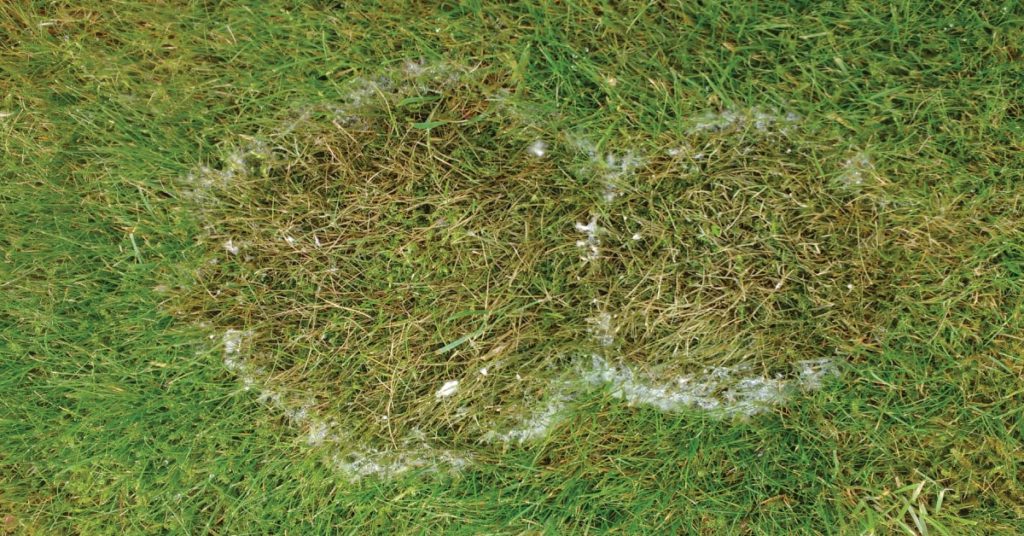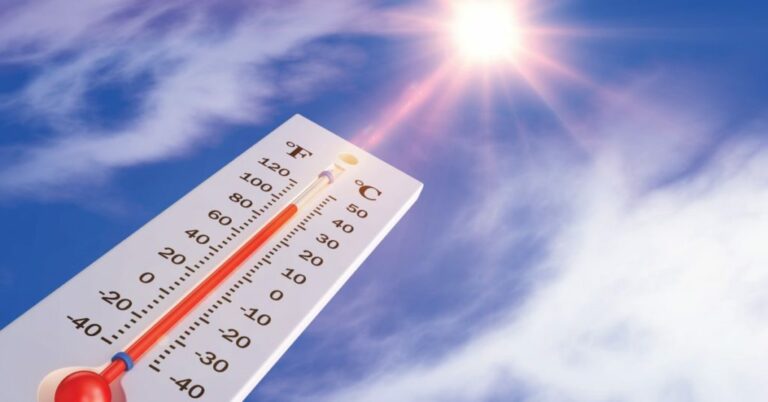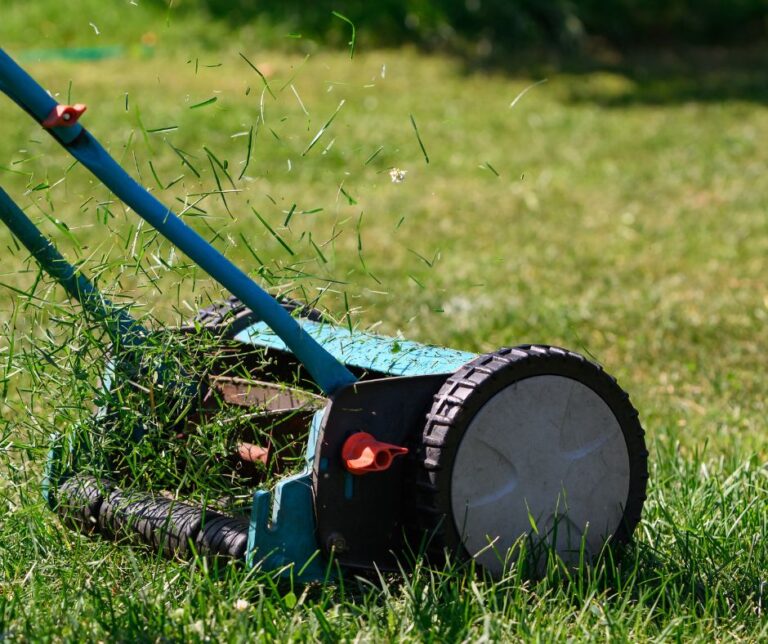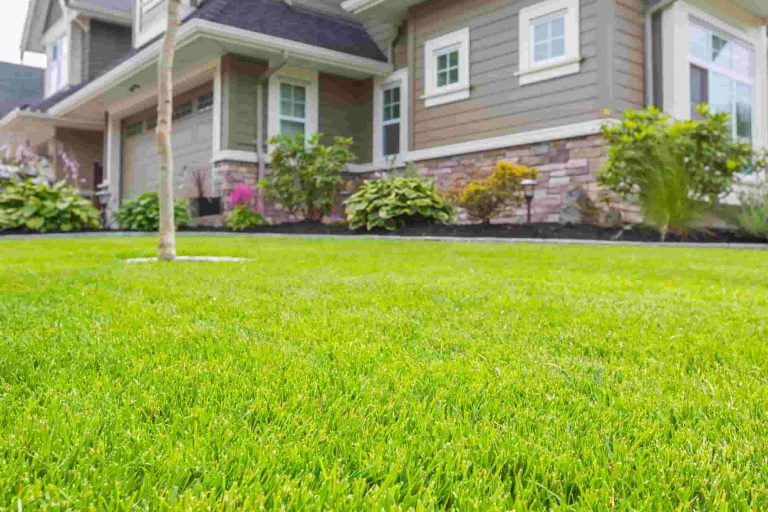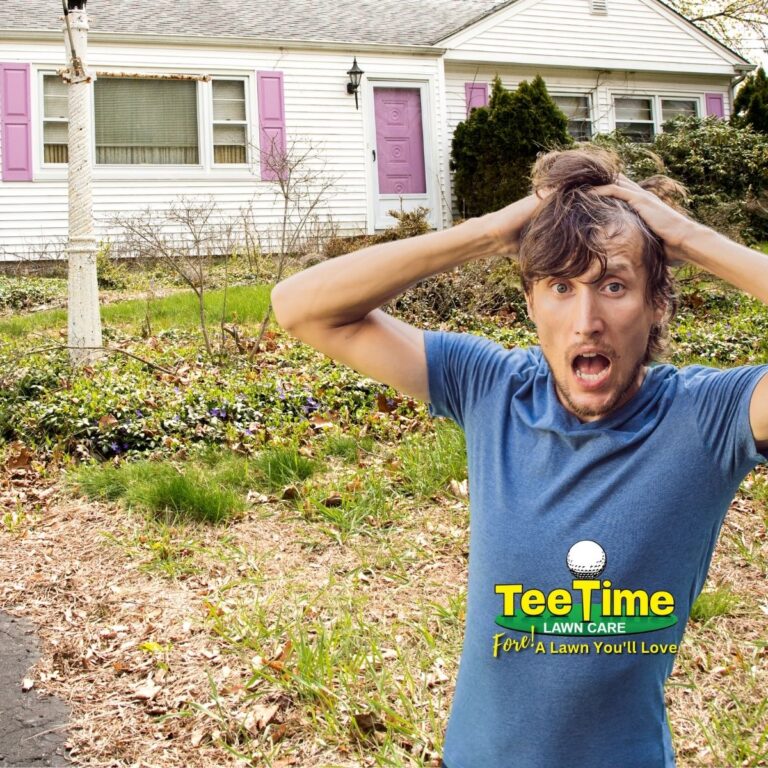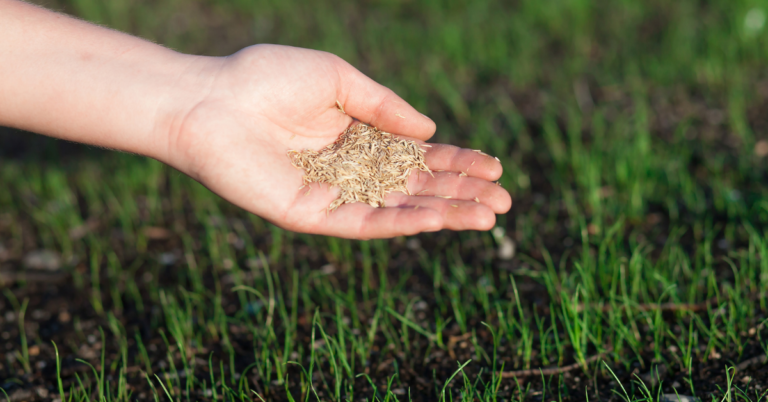How to Identify and Treat These Common Lawn Diseases

Something is not looking right with your lawn, but what could be the issue? Lawn fungus and disease can come in a variety of forms. Some signs of lawn fungus include discoloration, brown and yellow patches of dead grass. Many homeowners think that they have fertilizer burn rather than fungus due to the discoloration. However, if the turfgrass is not bouncing back after fertilizing, watering, or proper mowing, then the problem is linked to lawn disease. Our experts have put together a list on how to identify and treat lawn diseases.
Identify and Treat Lawn Diseases
1. Brown Patches

Brown patches are a summer disease and become active during hot, humid periods, often spreading across the lawn. Other contributing factors include overfertilizing, overwatering, massive thatch buildup, and mowing the grass too short. The brown patches resemble circles of dry and dead turfgrass, measuring up to 3 feet in diameter. Leaf-blades within the patch turn brown while the outside of the patch becomes gray-white. This outer band is evident at the perimeter of active patches. This lawn disease will harm the blades of grass but not the crown of the plant or the root system.
2. Dollar Spots

Next, dollar spots affect a wide range of turfgrasses throughout the year and are easy to identify. Dollar spot thrives in dry soil and moist air, becoming more active with rising temperatures in the spring. Other contributing factors include under-fertilizing, excessive moisture, and drought stress. If spotted early, each spot resembles to be about the size of a silver dollar. If left untreated, the patches spread into one another to form huge irregularly and discolored spots. This fungus attacks leaf blades, not the roots of turfgrasses.
3. Pythium Blight

Third, blight is a fungal lawn disease that receives a lot of attention because it spreads very quickly, affecting leaves and crowns, and killing plants. The hot, humid weather with consistently wet conditions contributes to blight outbreaks. Other contributing factors include compacted soil, overfertilizing, overwatering, and too much shade. This lawn fungus includes small, circular patches of withering, water-soaked leaves. Turf blades look greasy and stick together, roots begin to turn brown and rot, and grasses die quickly.
4. Rust

Fourth, this lawn disease usually happens in last summer during periods of dry weather or when the grass is low on nitrogen. Lawn rust spreads easily through its spores. The grass blades will be coated with orange-red to yellow-brown dust or spores. Rust begins with yellowing leaf blades, which turn to orange, red, or brown color. The rust spores can be rubbed off the grass blades easily and can be spread through walking and lawnmowers.
5. Anthracnose

Fifth, anthracnose typically grows in the early spring when the weather conditions are cool and wet, allowing the spores to spread easily between plants. Identify anthracnose by its dark-colored, water-soaked, wound that develops on plant stems, leaves, or fruit. The disease can also be determined by the irregular spots and dead areas of leaves that are tan or brown. Warm and dry weather can cause the lawn disease to die out, but it will re-emerge once cool and wet weather returns.
So, You’ve Got a Lawn Disease. What now?
Once you have determined that you are dealing with a type of fungus or disease, it is time to treat it. It is best to treat fungus as soon as you spot the problem, as some diseases can spread and kill the whole lawn.
At Tee Time Lawn Care, we have two preventative fungus programs that can help with the spread of fungus diseases:
- Our 3-Step Preventative Fungus Program, designed for lawns that have a know fungus issue that recurs yearly. This 3-Step program is perfect for customers who want to reduce the chance that fungus will develop in the yard. The program includes three preventative treatments evenly spread to provide maximum protection against fungus. Preventing the fungus will help save customers from needing a costly over-seeding application to fill in spots from where the fungus progressed too far.
- Our 2-Step Curative Fungus Program, designed for customers who are not sure if fungus will develop in their lawns or if they do not grow in their yard every year. With this service, we encourage customers to call us immediately if they see signs of lawn fungus. The first treatment will prevent fungus from progressing and spreading. The second spray will kill off any fungus before it begins to strengthen again.
How Tee Tee Can Help
By hiring a professional, like Tee Time Lawn Care, you can be sure that you are treating the right problem correctly. Our professionals can solve the problem faster and prevent further damage to your turfgrasses, providing the correct insight into the cause of the problem and help with prevention.
Lawn fungus and disease is a common lawn care problem, and it does not have to mean that all of your hard work is ruined. Sometimes lawn disease is due to factors out of your control, but taking the right steps to prevent and treat lawn disease can keep your grass looking beautiful all season long. Call us or reach out with the nearby quote form.

